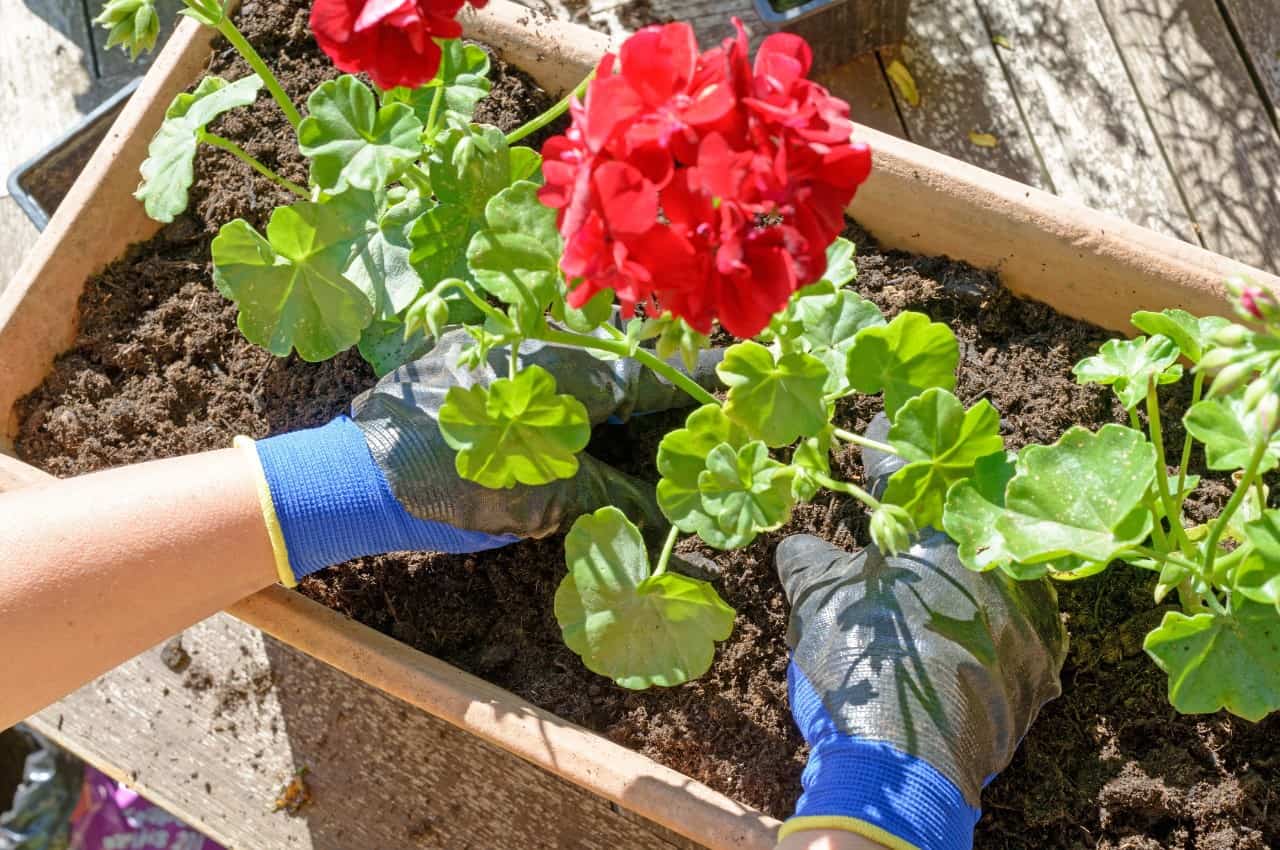
With almost 300 varieties, geraniums have long proven themselves as balcony and potted plants to decorate your patio. With our care tips you can make them bloom beautifully.
After buying a geranium, don’t put it in the dark for more than a day. These flowers love light. They prefer a sunny place without heavy rain. If they are threatened by frost, it is absolutely necessary to cover plants or move them to a warmer place.
Balcony boxes can be planted with geraniums in many ways, but remember that a narrow vessel is not suitable for growing these plants. Each geranium should have about three liters of soil as root space, and the distance from a neighboring plant should not be less than 25 cm. Large buckets or window boxes are ideal. It is important that each vessel has a water drainage, as geraniums can ill tolerate excess moisture.
If you really want to give your flowers the best, use only high-quality humus soil from specialty retailers. If you are planting an unusually large number of plants, it is a good idea to buy soil specifically for them that is properly fertilized
When repotting geraniums, don’t press the soil too hard and leave the watering edge about 1 cm from the edge of the pot. Also be careful when repotting climbing geraniums. Their long stems are usually supported by a grid attached to the pot. The safest way is to cut the pot and then gently remove the plant together with the support structure
Although the plants can store water in their thick leaves and stems, they still need regular and abundant watering. If there is not enough water, the lower leaves will wilt and fall off, although the geranium will flower even in this condition. During extremely hot weather you can water the flowers even twice a day. Alternatively, immerse dried pots in water until bubbles stop appearing.
Pelargoniums need a lot of nutrients in order to bloom beautifully and abundantly. A liquid fertilizer added to the water once a week is good for their care. See the package for dosage instructions. You can mix special fertilizers for potted plants into the soil to keep them nourished for several months.
You should regularly cut or pick wilted flowers. This applies especially to plants exposed to rain – their petals can stick together, making it easier for fungi and mold to attack
In August, geraniums can be pruned. Select strong shoots with two to four fully expanded leaves and use a sharp knife to separate them from the rest of the plant just below the leaf bud. Break off the lower leaves and flowers before placing the cuttings in the peat-sand mixture. To make the roots develop faster, cover the cuttings after watering and place in partial shade. Root formation takes four to six weeks. Then leave the geraniums to hibernate in a bright, cool place.
Pelargoniums can easily be grown as perennial plants. This is especially important for rare varieties of these flowers. Before the first frosts, move them to a bright place where the temperature does not drop below 5-10 degrees. Before doing so, cut them to a height of about 15 cm. The soil should be dry, but you can lightly water the flowers in winter. The stems will dry out and look dead, but they will come back to life in spring, especially if you remove the dry leaves beforehand.
You can also move the flowers indoors for the winter and they will bloom all year round on a sunny windowsill
Pelargoniums revive around February. Cut off all shoots up to two or three leaf buds. Repot the plants in fresh soil and place in a bright, warm place.
Scented geraniums are usually wild species, but they all release essential oils from their leaves and stems. Lovers of fragrant flowers should look around for varieties